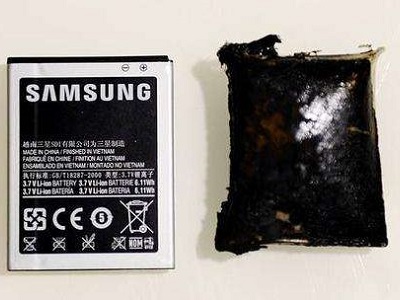In daily life, lithium batteries can be seen almost everywhere, from electric cars to small computer motherboard batteries, to various safety accidents caused by lithium batteries. The most impressive thing is the explosion, fire, etc. caused by lithium batteries. phenomenon. There is still a defect in the design of the internal battery. When the battery is fully charged, in the presence of defects, the battery temperature rises and the energy is excessive. Therefore, the electrolyte decomposes to generate gas, and the internal pressure of the battery rises sharply and spontaneous combustion or explosion occurs. In this case, we can choose a better battery, such as a polymer lithium battery. Smartphones, laptops, charging treasures, and similar electronic devices have problems that arise from chargers or lithium batteries.

Rechargeable batteries now store a lot of power in a small space. When the battery is operating in the desired mode, the power is slowly output in a controlled manner. If a cause causes a rapid release of power (such as an artificial short circuit), there is a risk of explosion or fire. I have seen that the battery has been on fire several times, some are intentional and some are unexpected.
Is the lithium battery explosive? What is the real cause of the explosion?
As a practitioner in the lithium battery industry, I think there are many reasons for the battery to catch fire or explode:
1. When the design is over-positive or unevenly coated, the vibration during transportation causes the pole pieces to be misaligned, and lithium dendrites appear during charging.
2. Vibration causes the pole piece to be misaligned during transportation, causing a short circuit through the housing or the connecting piece when the electrode expands.
3. Burrs and dust, vibration and expansion caused by short circuit of the diaphragm.
4. The diaphragm is bad.
5. The current is too large when spot welding the nickel strip, and the inner outer diaphragm is damaged or metal dust is added.
6. The voltage and temperature during transportation cause instability of the SEI layer.
7. Charging overcharge. When the battery cell is overcharged, the lithium of the positive electrode is excessively released, which may change the structure of the positive electrode, and too much lithium may be released into the negative electrode, which may easily cause lithium deposition on the surface of the negative electrode, and when the voltage reaches 4.5 V or higher, The electrolyte will decompose to produce a large amount of gas
8. The water is too high. The water can react with the electrolyte in the battery to produce a gas. When charging, it can react with the generated lithium to form lithium oxide, which causes the capacity of the battery to be lost. It is easy to overcharge the battery to generate gas and decompose the water. The voltage is low, and it is easy to decompose and generate gas when charging. When the gas generated in this series will increase the internal pressure of the cell, the cell will explode when the cell's outer casing cannot bear it.
9. The negative electrode capacity is insufficient. When the capacity of the negative electrode portion opposite to the positive electrode portion is insufficient or there is no capacity at all, part or all of the lithium generated during charging cannot be inserted into the interlayer structure of the negative electrode graphite, and will be deposited on the surface of the negative electrode to form a protruding "branch". Crystal, and the next time it is charged, this protruding part is more likely to cause lithium to precipitate. After several tens to hundreds of cycles of charge and discharge, the "dendrites" will grow up, and finally pierce the diaphragm paper, causing a short circuit inside. .
10. Internal short circuit. Due to the internal short circuit phenomenon, the battery discharges a large current, generates a large amount of heat, burns the diaphragm, and causes a larger short circuit phenomenon, so that the battery core generates high temperature, which decomposes the electrolyte into a gas, causing excessive internal pressure. When the cell's outer casing cannot withstand this pressure, the cell will explode.
11. External short circuit. External short circuit may be caused by improper operation or misuse. Due to external short circuit, the battery discharge current is very large, which will cause the battery core to heat up. The high temperature will cause the diaphragm inside the battery core to shrink or completely deteriorate, causing internal short circuit and thus exploding. .
All of the above are the causes of spontaneous combustion of lithium battery packs. Of course, there are many factors that affect the safety of lithium batteries. For example, the use of inferior batteries, the packing process is not standardized, and users may cause certain safety problems, but we must also be awake. It is recognized that lithium battery self-ignition is only a very small probability event. We can't kill a group of people with a stick. We still have to consider many aspects to minimize the external factors that cause lithium battery problems. We hope that practitioners can improve their technology and detection capabilities. Users should also pay attention to the use process.


